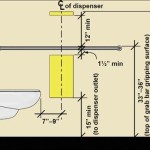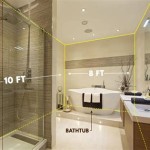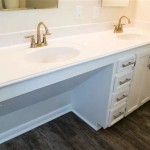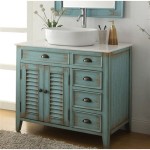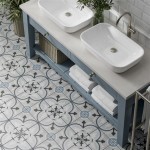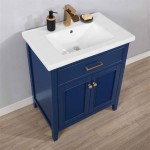Removing Bathroom Light Bulbs: A Comprehensive Guide
Removing a light bulb, especially in a bathroom setting, might seem like a straightforward task. However, various factors necessitate a careful and considered approach. This article provides a comprehensive guide to safely and effectively removing different types of light bulbs commonly found in bathrooms, addressing potential hazards and offering practical advice to ensure a successful outcome.
Safety Precautions: The Foundation of Light Bulb Removal
Prioritizing safety is paramount when handling any electrical component, including light bulbs. The primary risk arises from the potential for electrical shock. Therefore, the first and most crucial step is to switch off the light at the circuit breaker. Locating the appropriate breaker switch within the electrical panel ensures a complete disconnection of power to the light fixture. This step is non-negotiable and must be performed before any physical interaction with the bulb or fixture. Failure to do so presents a significant risk of electrocution.
Beyond electrical safety, another critical consideration is the temperature of the light bulb. A recently illuminated bulb can reach extremely high temperatures, posing a burn risk. Allowing the bulb to cool completely before attempting removal is essential. Typically, waiting for at least 15-20 minutes after the light has been switched off is sufficient for the bulb to cool to a safe handling temperature. Touching a hot bulb can result in severe burns and should be strictly avoided.
Finally, protection against potential bulb breakage is vital. Light bulbs, particularly incandescent and halogen types, can shatter upon impact or excessive pressure. Wearing eye protection, such as safety glasses or goggles, protects the eyes from glass shards. Similarly, wearing gloves, ideally work gloves or rubber gloves, protects the hands from cuts and provides a better grip, further reducing the risk of breakage. These simple precautions can significantly mitigate the risk of injury during the removal process.
Identifying the Light Bulb Type: A Prerequisite for Successful Removal
Different types of light bulbs require different removal techniques. Understanding the specific type of bulb is crucial for a successful and safe removal. Common types of bathroom light bulbs include incandescent, halogen, compact fluorescent (CFL), and light-emitting diode (LED) bulbs. Each type possesses unique characteristics that influence the removal process.
Incandescent bulbs are the traditional type, characterized by a glass envelope containing a filament that glows when heated. They typically have a screw base and are removed by turning counterclockwise. Halogen bulbs are similar to incandescent bulbs but contain halogen gas, resulting in higher efficiency and a brighter light. They can be recognized by their small size and often require handling with gloves to prevent oil from skin affecting their performance. CFL bulbs are energy-efficient alternatives, containing mercury vapor. They come in various shapes and sizes, often with a screw base, and must be handled with care to avoid breakage and mercury exposure. LED bulbs are the most energy-efficient option, offering long lifespans and emitting minimal heat. They come in a wide range of shapes and base types, requiring careful matching of the replacement bulb.
The base type is another important factor to consider. The most common base type is the Edison screw base, available in various sizes, such as E26 (standard size) and E12 (candelabra size). Other base types include bayonet mounts, which require pushing and twisting, and pin-based connectors, often found in fluorescent fixtures. Examining the bulb carefully before attempting removal will reveal the base type and inform the appropriate removal technique.
Techniques for Removing Different Light Bulb Types: A Step-by-Step Guide
Once the light bulb type and base are identified, the appropriate removal technique can be employed. For standard incandescent and LED bulbs with Edison screw bases, the process is generally straightforward. Ensure the bulb is cool and the power is off. Using gloved hands, grip the bulb firmly and turn it counterclockwise. If the bulb is stuck, a rubber jar opener can provide additional grip. Avoid applying excessive force, as this could cause the bulb to break.
Halogen bulbs require extra care due to their sensitivity to skin oils. Always wear gloves when handling halogen bulbs. Similar to incandescent bulbs, most halogen bulbs are removed by turning counterclockwise. However, some halogen bulbs feature a pin-based connection. These bulbs require gently pushing in and turning, following the manufacturer's instructions. If the bulb is difficult to remove, consult the fixture's manual for specific instructions.
CFL bulbs require caution due to the presence of mercury. If a CFL bulb breaks, immediately ventilate the area and avoid direct contact with the debris. Use gloves and a dustpan to collect the broken pieces and place them in a sealed plastic bag. Contact the local waste management authority for proper disposal instructions. To remove an intact CFL bulb with a screw base, follow the same procedure as for incandescent bulbs. For pin-based CFL bulbs, refer to the fixture's manual for specific removal instructions, as they often involve releasing a locking mechanism.
For recessed lighting fixtures, which often use reflector bulbs (R-bulbs) or parabolic aluminized reflector bulbs (PAR bulbs), a suction cup tool can be helpful. These tools provide a secure grip on the bulb's face, allowing for easier twisting and removal. Ensure the suction cup is clean and firmly attached to the bulb before attempting to turn it. Apply gentle, steady pressure while turning counterclockwise.
In cases where a bulb is stuck or broken, special tools may be required. A broken bulb extractor is a device designed to safely remove shattered bulbs from their sockets. These tools typically feature a rubber grip that fits over the broken bulb, allowing for a secure grip and turning motion. If a bulb is severely stuck, a penetrating oil or lubricant can be applied to the base to help loosen it. Allow the lubricant to soak for several minutes before attempting removal.
After removing the old light bulb, inspect the socket for any signs of corrosion or damage. If corrosion is present, use a wire brush to clean the socket contacts. Ensure the socket is dry before installing a new bulb. When installing the new bulb, avoid overtightening it, as this can damage the socket or the bulb itself. Turn the bulb clockwise until it is snug, but not excessively tight.
Ultimately, removing a bathroom light bulb requires a combination of careful planning, appropriate safety precautions, and the right techniques. By understanding the different types of light bulbs and employing the recommended procedures, individuals can safely and effectively replace bulbs, ensuring proper illumination and minimizing the risk of accidents. Consulting the fixture's manual or seeking assistance from a qualified electrician is always recommended when uncertainty arises.

How Do I Replace The Bulb In This Enclosed Bathroom Ceiling Light Hometalk

How To Replace A Bathroom Light Fixture

How To Remove The Light Cover In Room Frequently Asked Questions Leopalace21 Chintai Als Al Apartments And Monthly Mansion For Single Tenants

How To Remove Light Bulb Bunnings Work Community

Easy Ways To Replace An Led Recessed Light Bulb 13 Steps

How To Change A Bathroom Light Bulb

How Do I Replace The Bulb In This Enclosed Bathroom Ceiling Light Hometalk

How To Change A Recessed Light Bulb

Changing Shower Light Bulb In Recessed Fixture With Lens
Dome Ceiling Light Bulb Replacement Ifixit Repair Guide
